90% More Chances to Win Projects With Our Estimate!
- Multi-Family Building
- Hotel Building
- Hospital Building
- Warehouse Building
- School & University Building
- High-Rise Building
- Shopping Complex
- Data Center Building
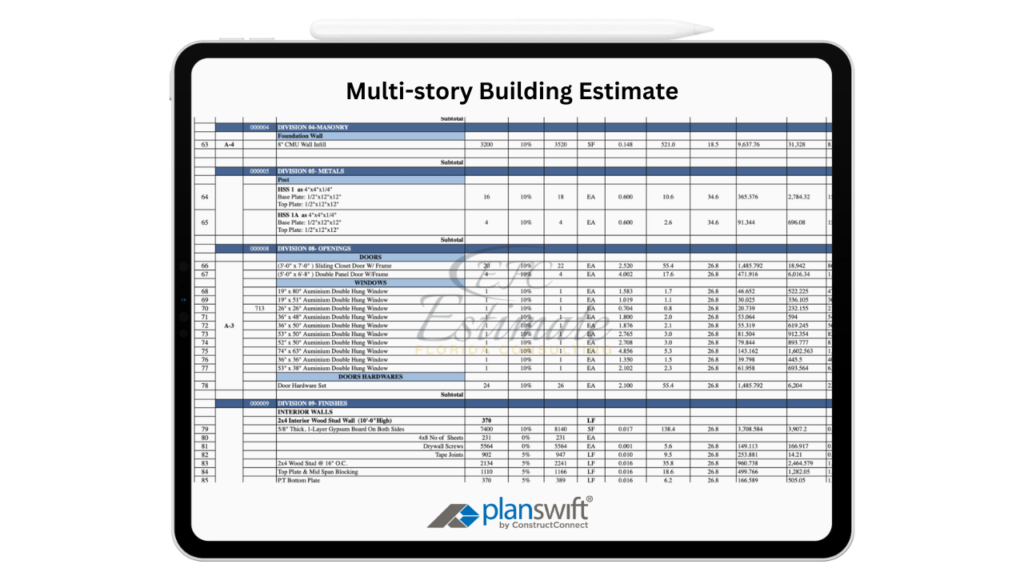
Constructing a multi-story building is a complex and multifaceted process that requires meticulous planning, budgeting, and execution. For general contractors, subcontractors, material suppliers, developers, and homeowners, understanding the various components involved in estimating costs is crucial for a successful project. This comprehensive guide will delve into the essential elements that determine the overall cost of building a multi-story structure, including construction, roofing, flooring, drywall, mechanical systems, concrete, masonry, plumbing, electrical work, painting, and more.
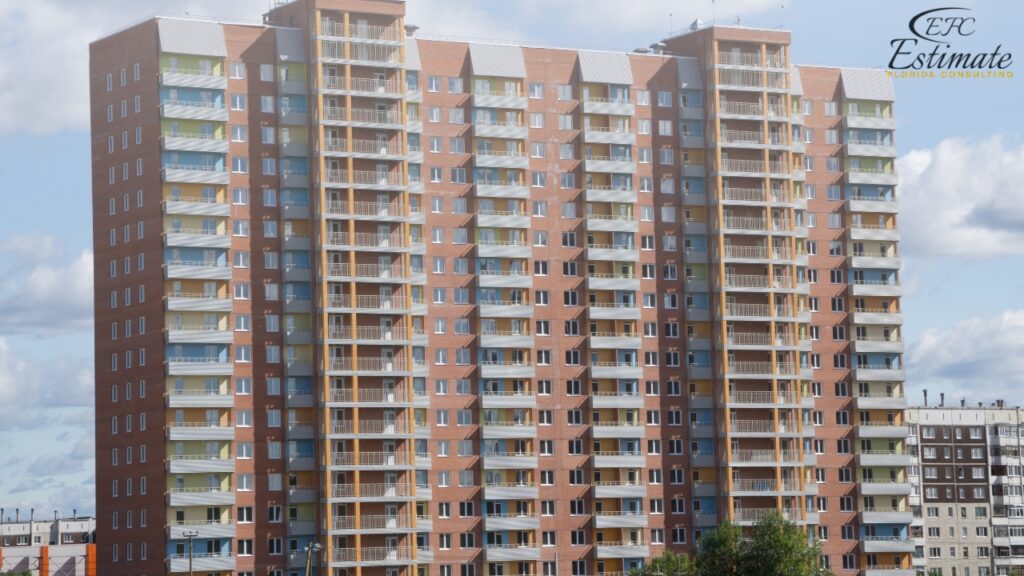
Construction costs for multi-story buildings in Florida vary depending on the building’s location, size, and purpose. On average, the cost to build a multi-story structure in Florida ranges between $150 to $300 per square foot, but factors like the building’s height, materials, and complexity can push this estimate higher. For example, constructing a commercial high-rise in a city like Miami may cost significantly more than a mid-rise residential building in a smaller town.
Cost Component | Cost per Square Foot | Total Cost for 10,000 sq ft |
Site Preparation | $6 – $18 | $60,000 – $180,000 |
Foundation | $16 – $33 | $160,000 – $330,000 |
Superstructure | $88 – $165 | $880,000 – $1,650,000 |
Finishes | $33 – $66 | $330,000 – $660,000 |
Miscellaneous Costs | $6 – $11 | $60,000 – $110,000 |
In Florida, site preparation involves more than just clearing land; it’s an essential first step that can significantly impact the overall cost of construction. Given Florida’s high water table, ensuring proper drainage and soil stabilization is critical to prevent future foundation issues, which could lead to costly repairs. In areas prone to flooding, particularly near coastal regions, contractors may need to build elevated foundations or grade the land to redirect water flow effectively. This can include using fill dirt or installing advanced drainage systems. Additionally, removing large trees, dealing with swampy conditions, or addressing other natural site obstacles adds further complexity. Such measures increase the time and expense of site preparation, but they are essential for the long-term stability of the building.
The type of foundation required for a multi-story building in Florida heavily depends on local soil conditions and the specific location. Coastal regions, characterized by sandy and loose soil, often require deep pile foundations to provide stability, especially in areas with shifting or eroding soil. These pile foundations may extend several feet into the ground, significantly increasing both labor and material costs. Conversely, inland areas with more stable ground might use standard slab-on-grade foundations, which are generally less expensive. However, additional reinforcement, such as rebar or thicker slabs, might still be necessary to safeguard against Florida’s unique weather risks, including hurricanes and heavy rainfall. Implementing hurricane straps or flood-resistant barriers can further drive up foundation expenses but are vital for long-term safety and structural integrity.
The superstructure of a multi-story building is one of the largest cost drivers in any construction project, and in Florida, materials must be chosen with the local climate in mind. Concrete and steel are common choices for high-rise buildings due to their durability and ability to withstand the high winds and storm surges often experienced during hurricane season. Although wood framing is more affordable and still used in smaller residential structures, its vulnerability to moisture and termites makes it less ideal for larger buildings in humid or coastal environments. The choice between steel, concrete, or wood framing can affect not only the initial construction costs but also long-term maintenance, as stronger materials require less upkeep. Moreover, Florida’s building codes demand robust structural elements that can resist wind uplift, which may increase the overall cost of the superstructure.
Florida’s unique climate also plays a significant role in the selection of exterior and interior finishes, particularly in coastal areas. Buildings in these regions need resilient materials that can withstand high humidity, saltwater corrosion, and frequent storms. For instance, stucco is commonly used as it resists moisture better than other materials and can be applied in thick layers for added protection. Hurricane-resistant windows and doors, made from impact-resistant glass, are often mandatory in coastal construction, adding to the project’s total cost but providing crucial protection. Inside, finishes like tile or vinyl are preferred over hardwood due to their resistance to moisture and ease of cleaning, especially in areas prone to flooding. Using these durable finishes ensures that the building remains functional and attractive for years, but it comes with higher upfront costs.
Miscellaneous costs, often overlooked in the early planning stages, can add up quickly and are essential to factor into a Florida construction budget. These include fees for building permits, zoning approvals, and multiple inspections throughout the construction process. Florida’s strict building codes, especially in hurricane-prone areas, require higher inspection standards, which leads to more frequent visits and additional costs. Furthermore, compliance with state-specific regulations, such as wind-load calculations and energy efficiency standards, can increase the need for specialized architects and engineers. This results in higher professional fees. Finally, local impact fees, which cover the strain new construction places on infrastructure like roads, water, and schools, also add to the project’s overall expenses. All these factors make planning and budgeting for miscellaneous costs essential to avoid unexpected financial surprises during the construction process.
Roofing is one of the most critical aspects of constructing a multi-story building in Florida due to the region’s frequent exposure to extreme weather. The roofing materials used must be able to withstand the high winds and heavy rains brought by hurricanes. As a result, roofing costs can range from $7 to $25 per square foot depending on the material and complexity of the roof design.
Roofing Type | Cost per Square Foot | Total Cost for 10,000 sq ft |
Asphalt Shingles | $7.00 – $12.00 | $70,000 – $120,000 |
Metal Roofing | $12.00 – $18.00 | $120,000 – $180,000 |
TPO Roofing | $10.00 – $14.00 | $100,000 – $140,000 |
Built-Up Roofing | $12.00 – $25.00 | $120,000 – $250,000 |
Asphalt shingles remain one of the most popular and cost-effective roofing options for residential properties due to their affordability and relatively easy installation. However, for multi-story buildings in Florida, especially in hurricane-prone areas, asphalt shingles may not be the most suitable choice. While they can perform well in typical weather conditions, their lower durability and susceptibility to wind uplift make them more vulnerable during severe storms. High winds can dislodge shingles, leading to roof leaks and expensive repairs. Additionally, Florida’s intense sunlight can accelerate the deterioration of asphalt shingles, causing them to wear out more quickly than in other climates. Over time, the frequency of repairs and replacements can add up, making this initially economical option more costly in the long run, particularly in a region known for hurricanes.
Metal roofing is increasingly recognized as one of the most durable and weather-resistant materials for both residential and commercial buildings in Florida. Its ability to withstand strong winds, often up to 140 mph or more, makes it particularly valuable in hurricane-prone areas. While the upfront cost of metal roofing is higher than asphalt shingles, its long lifespan—often 40 to 70 years—makes it a worthwhile investment. In addition to durability, metal roofs are energy-efficient, reflecting heat from the sun and helping to reduce cooling costs in Florida’s hot climate. They are also resistant to fire, mildew, and pests, which further enhances their long-term value. Though initial installation costs are higher, the lower maintenance requirements and enhanced storm protection make metal roofing an attractive choice for multi-story buildings.
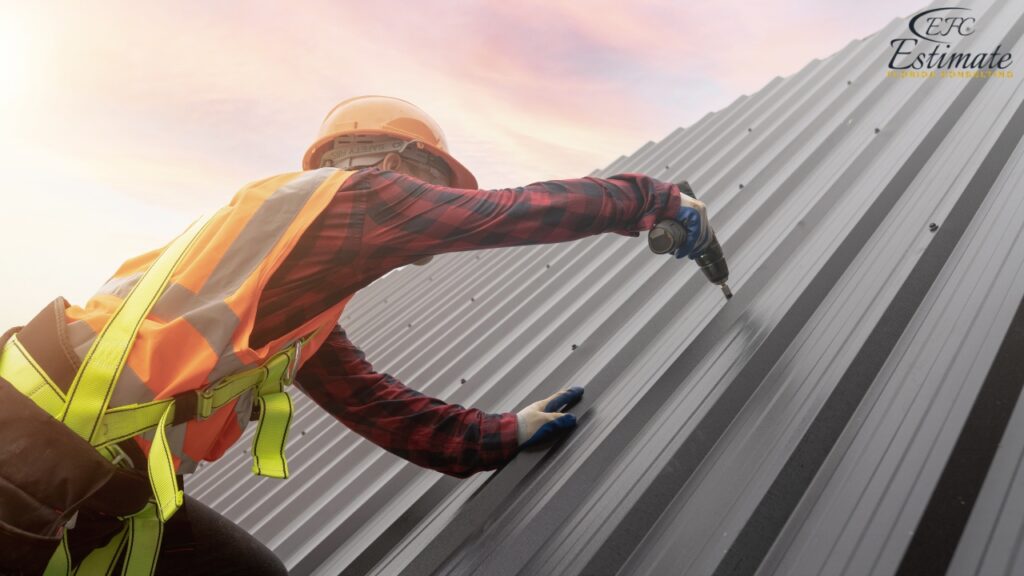
Thermoplastic Polyolefin (TPO) roofing is a popular choice for flat roofs, particularly in commercial buildings, because of its energy efficiency and relatively low cost. TPO roofing membranes are designed to reflect UV rays, which helps to reduce the heat absorbed by the building, lowering energy bills in Florida’s hot, sunny climate. Additionally, TPO is a highly flexible material that can accommodate the structural movements of a building without cracking or tearing. It is also resistant to both chemical exposure and microbial growth, making it ideal for the humid environment in Florida. TPO roofing systems are relatively affordable, especially when compared to more premium roofing options like metal, yet they still provide excellent durability and protection against water damage. For multi-story commercial buildings, TPO offers a cost-effective solution with substantial energy savings over time.
Built-up roofing (BUR) is a traditional and highly effective solution for flat or low-slope roofs, commonly seen in commercial or industrial buildings. Comprising multiple layers of reinforcing fabrics and bitumen, built-up roofing provides excellent resistance to both wind and water damage, which is critical in Florida’s storm-prone environment. The multiple layers of material create a thick, durable membrane that helps protect the roof from leaks, even during heavy rainfall and high winds. Additionally, the gravel or stone top layer of BUR provides UV protection, reducing the degradation of the roof caused by Florida’s intense sunlight. While BUR can be more labor-intensive and costly to install compared to single-ply systems like TPO, its robustness and long lifespan make it a sound investment for large, multi-story buildings in hurricane zones. The heavy-duty nature of built-up roofing ensures superior performance in harsh weather conditions, making it a common choice for commercial properties across Florida.
Flooring plays a vital role in both the functionality and aesthetic appeal of a multi-story building. In Florida, the choice of flooring materials is influenced by the region’s humid climate and the potential for flooding in some areas. Flooring costs can range from $4 to $22 per square foot, depending on the material selected.
Flooring Type | Cost per Square Foot | Total Cost for 10,000 sq ft |
Carpet | $6.00 – $12.00 | $60,000 – $120,000 |
Vinyl Flooring | $4.00 – $9.00 | $40,000 – $90,000 |
Tile Flooring | $12.00 – $18.00 | $120,000 – $180,000 |
Hardwood Flooring | $10.00 – $22.00 | $100,000 – $220,000 |
Carpet is widely recognized as a cost-effective and comfortable flooring option for residential spaces, providing warmth and softness underfoot. However, in Florida’s humid climate, carpet may not be the best choice for several reasons. Humidity can cause carpet fibers to trap moisture, leading to mold and mildew growth, which poses health risks and requires frequent cleaning and maintenance. Additionally, spills and accidents can result in permanent stains if not addressed promptly, further complicating upkeep. While carpet can be more affordable upfront compared to other flooring types, the long-term maintenance costs, such as professional cleaning and potential replacement due to wear or damage from humidity, can accumulate over time. Consequently, homeowners in Florida might want to consider alternative flooring solutions that are better suited for high-moisture environments.
Vinyl flooring stands out as a durable and water-resistant option, making it particularly well-suited for Florida’s humid climate. Its construction allows it to withstand moisture without warping or sustaining damage, making it a practical choice for areas prone to spills and humidity, such as kitchens and bathrooms. The affordability of vinyl flooring, coupled with its ease of installation, makes it a popular choice for both residential and commercial multi-story buildings. Homeowners and property managers appreciate the wide range of styles and designs available, allowing for aesthetic versatility without sacrificing functionality. Moreover, vinyl is easy to clean and maintain, requiring just regular sweeping and occasional mopping. As such, vinyl flooring offers an excellent balance of durability, low maintenance, and cost-effectiveness, making it an ideal flooring solution in Florida.
Tile flooring is a standout option for Florida’s warm and humid climate, offering significant advantages in terms of moisture resistance and ease of cleaning. Its non-porous surface prevents water absorption, making it ideal for use in bathrooms, kitchens, and other high-traffic areas where spills are common. Although the initial cost of tile flooring is generally higher than options like vinyl or carpet, its durability and longevity make it a worthwhile investment. Tile can last for decades when properly maintained, withstanding the wear and tear associated with busy households or commercial properties. Furthermore, tile flooring is available in a myriad of styles, colors, and finishes, allowing homeowners and builders to create aesthetically pleasing environments. The ability to keep tile cool in hot weather adds to its appeal in Florida, providing a comfortable surface underfoot during sweltering summer months.
Hardwood flooring is often celebrated for its timeless elegance and ability to add significant value to a property. However, in Florida’s humid climate, traditional hardwood can pose challenges due to its susceptibility to moisture. High humidity levels can cause hardwood to expand and contract, leading to warping, buckling, and gaps between planks. This necessitates regular maintenance, including humidity control and proper cleaning methods, which can be more labor-intensive than other flooring options. To mitigate these issues, many homeowners opt for engineered hardwood, which consists of a hardwood veneer over layers of plywood. This construction makes it more resistant to moisture fluctuations compared to solid hardwood. While engineered hardwood can offer the same aesthetic appeal and durability as traditional hardwood, it’s crucial to choose high-quality products that can withstand Florida’s unique environmental conditions. Ultimately, while hardwood flooring can enhance the beauty and value of a building, careful consideration and maintenance are necessary to ensure its longevity in humid climates.
Drywall is an essential component in the construction of interior walls and ceilings. In Florida, it is crucial to consider moisture-resistant drywall due to the state’s high humidity levels. Drywall costs can range from $1.50 to $3 per square foot.
Drywall Type | Cost per Square Foot | Total Cost for 10,000 sq ft |
Standard Drywall | $1.50 – $2.50 | $15,000 – $25,000 |
Moisture-Resistant Drywall | $2.50 – $3.00 | $25,000 – $30,000 |
Standard drywall is a widely used material in the construction of interior spaces due to its affordability and ease of installation. It is suitable for most applications, making it a go-to choice for walls and ceilings in residential and commercial buildings alike. However, in areas with higher humidity, such as Florida, standard drywall may pose significant challenges. Its porous nature can lead to moisture absorption, resulting in problems like mold growth, sagging, and deterioration over time. In humid conditions, standard drywall may also experience issues like paper delamination or warping, which can compromise the integrity of the wall system and necessitate costly repairs or replacements. As a result, while standard drywall is a cost-effective choice for many applications, its performance in humid environments makes it a less reliable option for regions like Florida where moisture control is critical.

Moisture-resistant drywall, often referred to as green board, presents a more suitable alternative for Florida’s humid climate. This type of drywall is specifically designed to withstand moisture and is typically used in areas where humidity levels are high or where water exposure is common, such as bathrooms, kitchens, and laundry rooms. Unlike standard drywall, moisture-resistant drywall features a water-repellent core and is coated with a special moisture-resistant paper, providing enhanced durability and protection against mold and mildew. While the initial cost of moisture-resistant drywall is slightly higher than that of standard drywall, the long-term benefits far outweigh the investment. By effectively reducing the risk of moisture damage, this drywall option contributes to a healthier indoor environment and minimizes the likelihood of costly repairs in the future. Overall, choosing moisture-resistant drywall is a proactive approach to construction in Florida, ensuring the longevity and resilience of interior spaces against the challenges posed by the state’s unique climate.
Mechanical systems, including HVAC (heating, ventilation, and air conditioning), are crucial for maintaining comfortable indoor environments, especially in Florida’s hot climate. The costs for mechanical systems in multi-story buildings typically range between $10 to $15 per square foot, depending on the building’s size and complexity.
Mechanical System | Cost per Square Foot | Total Cost for 10,000 sq ft |
HVAC Installation | $8.00 – $10.00 | $80,000 – $100,000 |
Ventilation Systems | $2.00 – $5.00 | $20,000 – $50,000 |
HVAC (Heating, Ventilation, and Air Conditioning) systems are essential components in managing indoor temperatures and air quality, especially in climates like Florida, characterized by high heat and humidity. The installation of an efficient HVAC system is crucial not only for comfort but also for energy conservation. Given Florida’s intense summer temperatures, selecting a system with a high energy efficiency rating (SEER) can significantly reduce energy costs over time. The initial investment in a high-efficiency HVAC system may be higher, but the long-term savings on energy bills and reduced environmental impact can justify this cost. Additionally, the size and layout of the building play a critical role in determining HVAC system costs. Larger buildings may require more complex systems, including multiple units or zoned heating and cooling, which can increase installation costs. Furthermore, choosing the right HVAC system involves considering factors such as insulation, ductwork design, and any specific building regulations in Florida, which can add to the overall expense. Therefore, investing in a well-designed HVAC installation tailored to Florida’s unique climate is essential for ensuring comfort, efficiency, and indoor air quality.
Proper ventilation systems are a critical aspect of multi-story buildings, especially in Florida’s humid environment, where stagnant air can lead to serious indoor air quality issues. These systems are designed to ensure adequate air circulation, which helps to prevent the buildup of moisture and the growth of mold and mildew. In humid climates like Florida, proper ventilation becomes even more crucial to maintaining a healthy indoor atmosphere, as trapped humidity can lead to structural damage, increased allergens, and health risks for occupants. The cost of installing a good ventilation system is relatively low compared to the potential expenses associated with mold remediation and damage repairs.
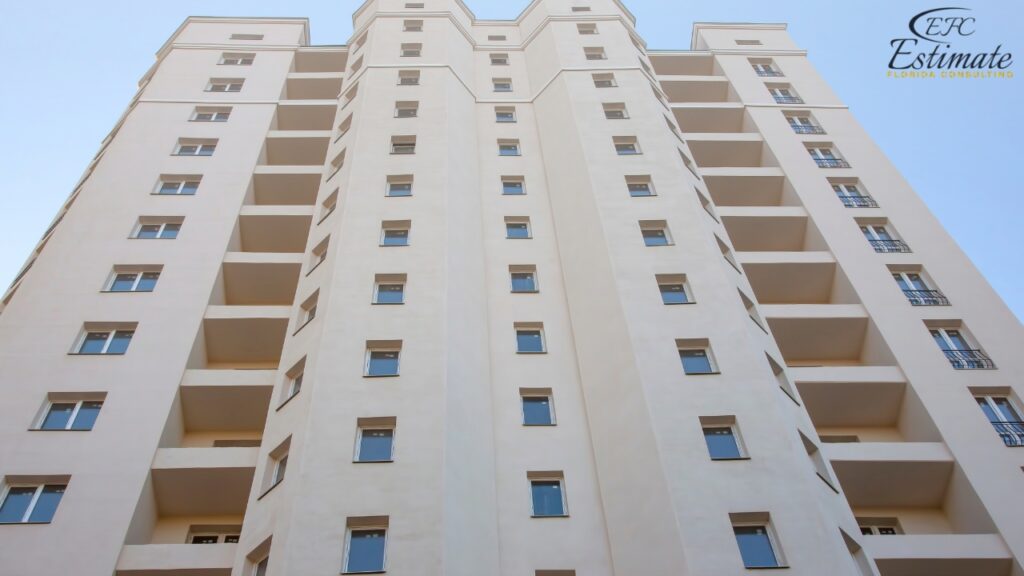
Effective ventilation solutions, such as exhaust fans, intake vents, and energy recovery ventilators (ERVs), can dramatically improve indoor air quality by replacing stale indoor air with fresh outdoor air, thus diluting pollutants and controlling humidity levels. Additionally, implementing a proper ventilation strategy can enhance the efficiency of HVAC systems by allowing them to operate more effectively, leading to lower energy consumption and improved comfort. Therefore, investing in quality ventilation systems is essential for any multi-story building in Florida, ensuring the health and safety of its occupants while maximizing the longevity and performance of the overall building infrastructure.
Concrete and masonry work forms the backbone of any multi-story building, providing structural integrity and durability. The costs for concrete and masonry typically range from $20 to $50 per square foot, depending on the complexity of the design.
Component | Cost per Square Foot | Total Cost for 10,000 sq ft |
Concrete Foundations | $12.00 – $20.00 | $120,000 – $200,000 |
Masonry Walls | $8.00 – $30.00 | $80,000 – $300,000 |
Concrete foundations are a fundamental component of any multi-story building, serving as the structural base that supports the entire structure. In Florida, where soil conditions can vary significantly—from sandy to clay-rich—reinforced concrete foundations are often essential to ensure stability and strength. The nature of the soil directly impacts the design and construction of the foundation. Sandy soils, which are more prone to shifting and erosion, typically require deeper footings or pilings to ensure adequate support. On the other hand, clay soils can expand and contract with moisture changes, potentially leading to foundation movement if not properly addressed. In light of Florida’s susceptibility to severe weather events, such as hurricanes, reinforced concrete is particularly valuable for its ability to withstand strong winds and flooding. The use of steel reinforcement bars (rebar) within the concrete increases its tensile strength, providing added resilience against lateral forces and ground movement. While the initial costs associated with pouring a concrete foundation can be higher than alternative materials, the long-term benefits—including durability, low maintenance, and safety—far outweigh these initial expenses. A properly constructed concrete foundation not only enhances the structural integrity of the building but also contributes to its overall lifespan and resilience against Florida’s unique environmental challenges.
Masonry walls are a popular choice for multi-story buildings, serving as load-bearing elements that provide structural support and stability. Typically constructed from bricks, concrete blocks, or stone, masonry offers exceptional durability and strength, making it an ideal option for Florida’s climate, where buildings must withstand high winds and potential flooding. While the initial cost of masonry work is generally higher than that of alternative building materials like wood or drywall, the long-term benefits can lead to significant savings over time. Masonry walls have a natural thermal mass, which helps regulate indoor temperatures by absorbing heat during the day and releasing it at night, leading to improved energy efficiency. This can result in lower heating and cooling costs, which is particularly beneficial in Florida’s warm climate. Additionally, masonry is resistant to moisture, pests, and fire, making it a low-maintenance choice for building exteriors. The longevity of masonry structures often translates to fewer repairs and replacements, contributing to lower overall life cycle costs. Overall, the investment in masonry walls not only enhances the aesthetic appeal of a building but also ensures its durability and energy efficiency, making it a sound choice for developers and homeowners in Florida.
Plumbing systems are vital for the functionality of any multi-story building, providing water supply and drainage solutions. Plumbing costs in Florida can range from $5 to $15 per square foot, depending on the building’s size and plumbing complexity.
Component | Cost per Square Foot | Total Cost for 10,000 sq ft |
Piping Installation | $3.00 – $7.00 | $30,000 – $70,000 |
Fixtures (Sinks, Toilets) | $2.00 – $5.00 | $20,000 – $50,000 |
The cost of piping installation depends on the materials used, such as copper or PEX piping, and the complexity of the building’s design. Copper piping, while more expensive, is known for its durability and longevity, making it a popular choice in Florida’s humid climate.
The type of plumbing fixtures installed, including sinks, toilets, and faucets, will affect the overall plumbing cost. High-end fixtures are more expensive but can add significant value to the building.
Electrical systems are essential for powering the building and ensuring safety through the installation of lighting, wiring, and electrical fixtures. In Florida, the cost of electrical systems typically ranges from $5 to $15 per square foot.
Component | Cost per Square Foot | Total Cost for 10,000 sq ft |
Wiring Installation | $5.00 – $10.00 | $50,000 – $100,000 |
Electrical Fixtures | $1.00 – $5.00 | $10,000 – $50,000 |
The wiring costs depend on the complexity of the electrical system and the type of wiring used. For multi-story buildings in Florida, fire-resistant wiring is often required to meet building codes, adding to the overall cost. Copper wiring, which is highly conductive and durable, is commonly used but comes at a higher price.
The cost of electrical fixtures includes lighting systems, outlets, and switches. High-efficiency LED lighting is a popular choice due to its energy-saving benefits, though it may have a higher upfront cost.
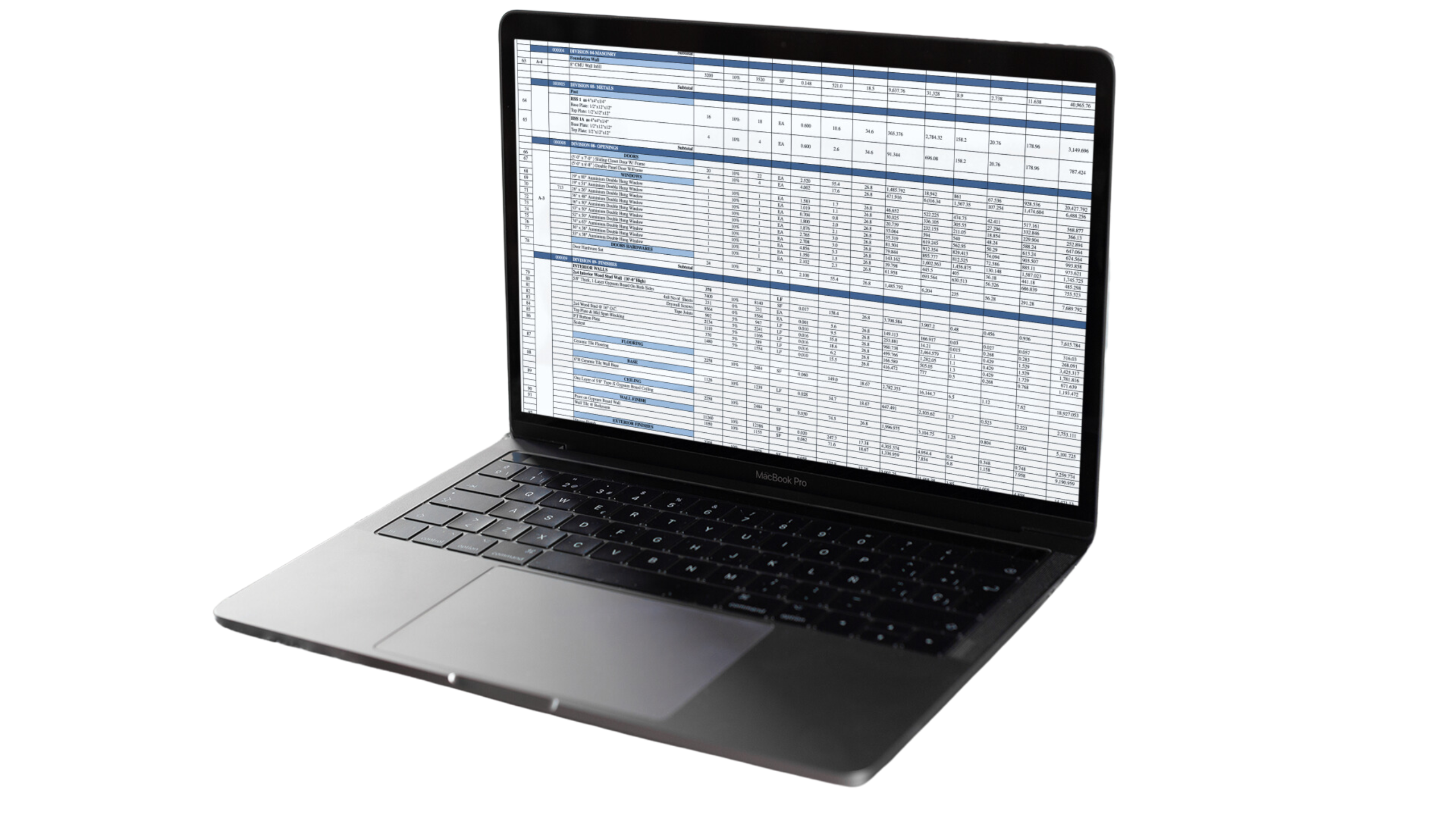
Interior finishes, such as painting and trim work, are the final touches that complete the building. The cost of painting and interior finishing can range from $1 to $5 per square foot, depending on the materials and design choices.
Component | Cost per Square Foot | Total Cost for 10,000 sq ft |
Painting | $1.00 – $3.00 | $10,000 – $30,000 |
Trim and Molding | $2.00 – $5.00 | $20,000 – $50,000 |
High-quality, weather-resistant paints are necessary for multi-story buildings in Florida due to the humid climate. Exterior paints must also be durable enough to withstand heavy rains and strong winds. While cheaper paint options may reduce initial costs, investing in high-quality paint can save money in the long run by reducing maintenance needs.
Trim and molding add a decorative element to interior spaces, but they also serve a functional purpose. In Florida, moisture-resistant materials like vinyl or composite are often preferred for trim work, as they are less likely to warp or degrade in humid conditions.
Accurately estimating the costs associated with multi-story building construction is essential for successful project execution. By understanding the various components, from roofing to plumbing, and incorporating detailed cost breakdowns, contractors and developers can make informed decisions that enhance project efficiency and profitability. As the construction industry continues to evolve, leveraging advanced estimation techniques and software will further streamline the process, ensuring that projects remain within budget and on schedule. Ultimately, thorough estimation not only helps in financial planning but also contributes to delivering high-quality structures that meet the needs of the community.
A multi-story building estimator is a professional or tool that calculates the costs associated with constructing a multi-story building. This includes estimating expenses for materials, labor, equipment, and other project-related costs.
Accurate cost estimation is crucial for budgeting, securing financing, and ensuring the project's financial viability. It helps contractors and developers avoid unexpected expenses and allows for better project planning and resource allocation.
Key factors include location, building materials, design complexity, labor costs, site conditions, and local regulations. Additional considerations like architectural features, mechanical systems, and environmental impacts also play a significant role.
Cost reduction strategies include choosing cost-effective materials, optimizing design, employing efficient construction methods, and leveraging technology for better project management. Collaborating with experienced contractors and suppliers can also lead to savings.
Several software tools, such as ProEst, PlanSwift, and Bluebeam, offer functionalities for estimating construction costs. These tools often provide templates, cost databases, and advanced features for accurate calculations.
To calculate the cost per square foot, divide the total estimated construction costs by the total square footage of the building. This metric helps compare costs across different projects and regions.
Yes, there are industry standards and guidelines provided by organizations like the American Society of Professional Estimators (ASPE) and the National Association of Home Builders (NAHB). These standards can help ensure consistency and accuracy in estimates.
A comprehensive cost estimate should include breakdowns for materials, labor, equipment, permits, utilities, and contingencies. It’s also essential to account for indirect costs, such as overhead and profit margins.
Cost estimates should be updated regularly throughout the project lifecycle, especially during significant changes in design, materials, or labor costs. Frequent updates help maintain financial control and adaptability.
At Estimate Florida Consulting, we offer detailed cost estimates across all major trades, ensuring no part of your project is overlooked. From the foundation to the finishing touches, our trade-specific estimates provide you with a complete and accurate breakdown of costs for any type of construction project.

We take pride in delivering accurate, timely, and reliable estimates that help contractors and builders win more projects. Our clients consistently praise our attention to detail, fast turnaround times, and the positive impact our estimates have on their businesses.
Estimate Florida Consulting has helped us win more bids with their fast and accurate estimates. We trust them for every project!

Submit your project plans, blueprints, or relevant documents through our online form or via email.
We’ll review your project details and send you a quote based on your scope and requirements.
Confirm the details and finalize any adjustments to ensure the estimate meets your project needs.
Receive your detailed, trade-specific estimate within 1-2 business days, ready for your project execution.

561-530-2845
info@estimatorflorida.com
Address
5245 Wiles Rd Apt 3-102 St. Pete Beach, FL 33073 United States
561-530-2845
info@estimatorflorida.com
Address
5245 Wiles Rd Apt 3-102 St. Pete Beach, FL 33073 United States
All copyright © Reserved | Designed By V Marketing Media | Disclaimer